
Lure fishing rigs & when to use them
Choosing the right rig is often the difference between catching fish and blanking. In this guide we aim to cover every lure fishing rig, and when to use it to catch UK salt and freshwater fish species. We will look at lure fishing rigs from Japan, America and Russia that can be applied to UK sea and freshwater predator fishing.
FISHMAG is an Amazon Affiliate and may earn commission from sales. We also highlight the best deals from other retailers to find you the best price
The Texas Rig
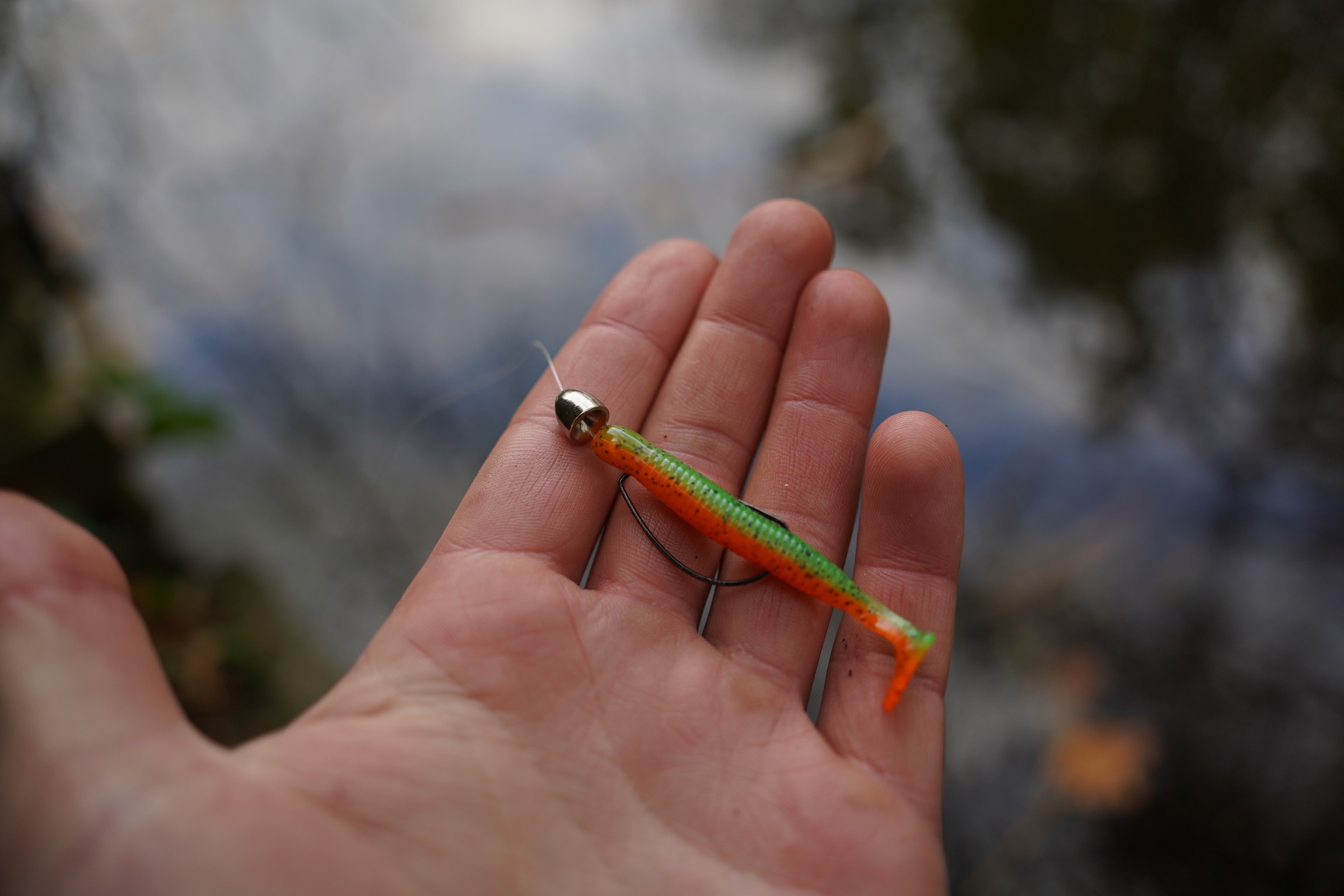
When to use the Texas rig
The Texas rig is useful when fishing on the bottom over rough, snaggy ground. It’s also one of the cheapest rigs out there so is a good staple rig to keep your costs down.
What species is the Texas rig used to catch?
The Texas rig was invented in the US for targeting freshwater bass in structure. Since the freshwater bass over there are keen on living in the snaggiest ground, using weedless hooks provides an advantage. The Texas Rig is a go-to rig on the US professional fishing circuit.
In the UK we use the Texas rig to catch perch in fresh water and wrasse, pollock, bass and cod in the sea. It’s the most popular rig for wrasse fishing because it allows you to fish very rough ground in a cost effective manner compared to other rigs like pre-rigged soft plastics. For bass fishing, the Texas rig works but there are better rigs, because the free running lead can interfere with a natural lure presentation if bass are wary.
What is the Texas rig?
Essentially, you have a single weedless hook with a bullet weight directly above it, running freely on your line. Some people put a bead between the hook and the bullet lead to protect their knot.
The Texas rig is fished over snaggy ground on or near the bottom. It is also effective when deadsticking (leaving the lure motionless on the bottom). It is not the best rig if you’re fishing above the seabed because other rigs like jig heads have a superior presentation.
The key aspect of this rig is the way that the hook is threaded through your soft lure. To rig a hook weedlessly, you push your hook point through the tip of the lure at the top, then back through the middle so that the hook point lies flat directly on the upper surface of the soft lure.
Your lure is much less likely to get snagged, but when a fish bites or you strike, the hook point comes true. The rig is even less likely to snag if you ‘peg’ the rig, by adding a float stop or bit of elastic to prevent the cone weight from riding up the line.
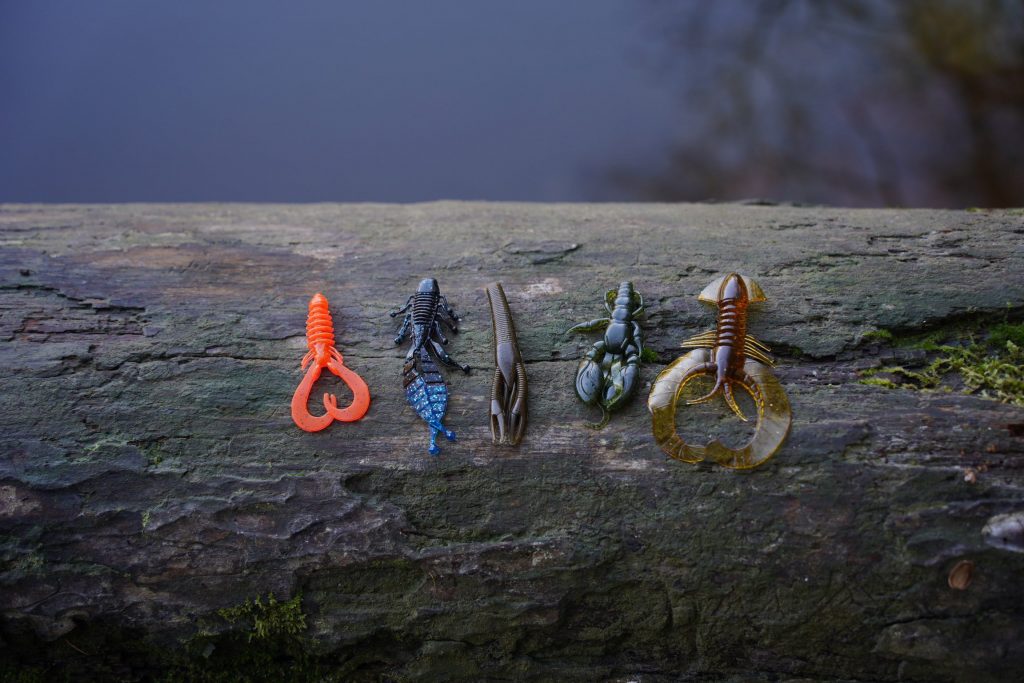
What type of lures are used on a Texas rig?
You can use any type of soft plastic with the Texas rig. For Perch, creature baits are popular, and having floating claws can aid presentation by lifting the lure up off the bottom. Getting the right hook size is important too. One mistake you can make with this rig is using a hook that’s too small for your soft plastic so that the weedless hook point does not come out easily once the lure has been taken by a fish. Another mistake is using a hook so big that it limits the movement of your soft lure, or rigging the soft plastic so that the eye of the hook is visible. Finally, using bullet weights that are too heavy can ruin the action of your lure, making it move very unnaturally. The next rig we look at presents a solution for this.
When using the Texas rig in the sea in the UK, crush your barbs. It’s difficult to remove barbed hooks from the mouths of small, toothy mouths of wrasse.
The Carolina Rig
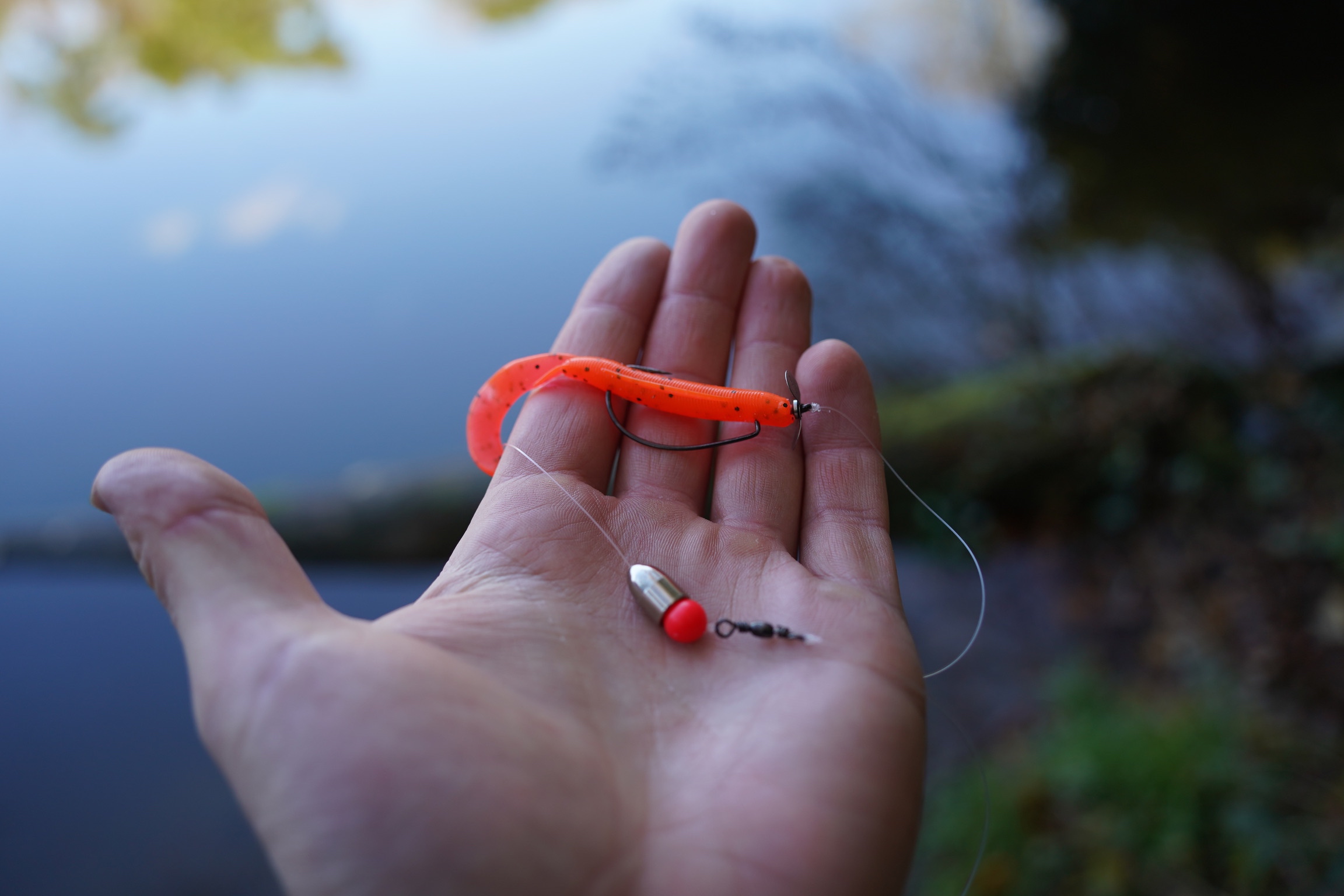
When to use the Carolina rig
The Carolina rig is used for fishing on the bottom over snaggy ground. The main advantage of a Carolina rig over a texas rig is that you can fish with larger cone or bullet weights without interfering with your lure’s action so much. This allows you to cast further on windy days or when you want to cover lots of ground.
The limitation of the Carolina rig is that it’s harder to feel bites because your rod is connected to the weight, not the hook. When Wrasse fishing, the Texas rig is a better choice because it gives you a couple of extra seconds to get the fish away from snags.
- The weight is fixed well away from your lure
- The weight is free running, so fish feel don’t feel it
- The section of leader means lures fall more slowly
- The leader means that it’s harder to feel bites
If you wanted to give a fish a bit of freeline but then meet resistance a few seconds later, you could add a float stop 7-10” above your bullet weight to stop it riding up your line past that point.
The Dropshot Rig
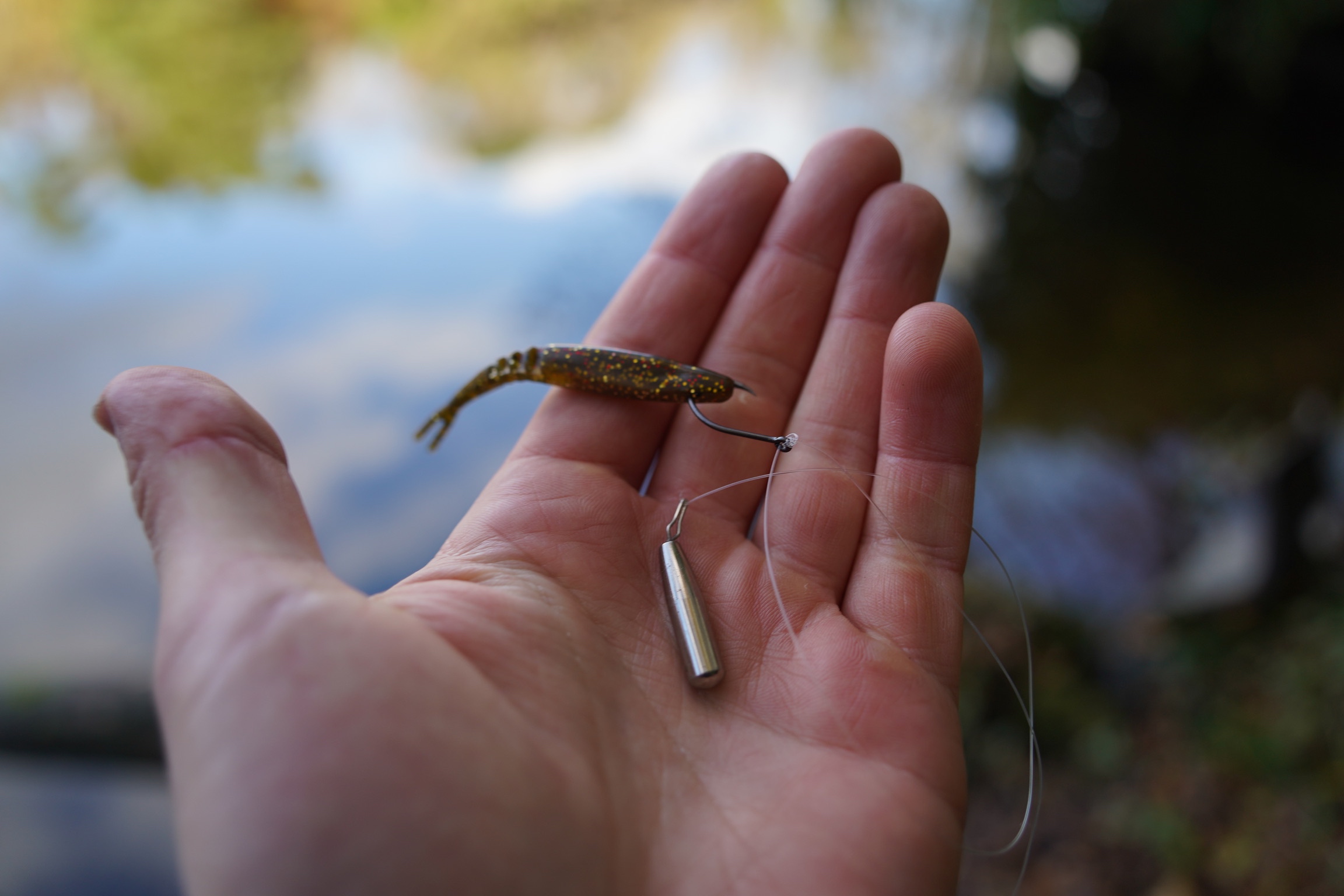
Dropshotting is a finesse method for presenting soft plastic lures. This means it is for presenting lures more subtly than you can with other rigs. This is because the dropshot is separate from your lure, so when the rig is fished very slowly with the weight on the bottom, it’s mainly just a single unweighted lure the fish will see. If you’ve done any bait fishing, you will notice the drop shot rig is similar to a paternoster rig, except a snood is rarely used to connect the hook to your leader.
It’s important that you use the right knot when attaching a hook on a dropshot rig. The palomar is the best knot for this purpose.
The dropshot rig is hugely popular for freshwater perch fishing in winter, because it allows you to present lures at low speeds while keeping your lure in the strike zone for the fish. Usually this means your lure is about 1m off the bottom, slowly twitching back to you.
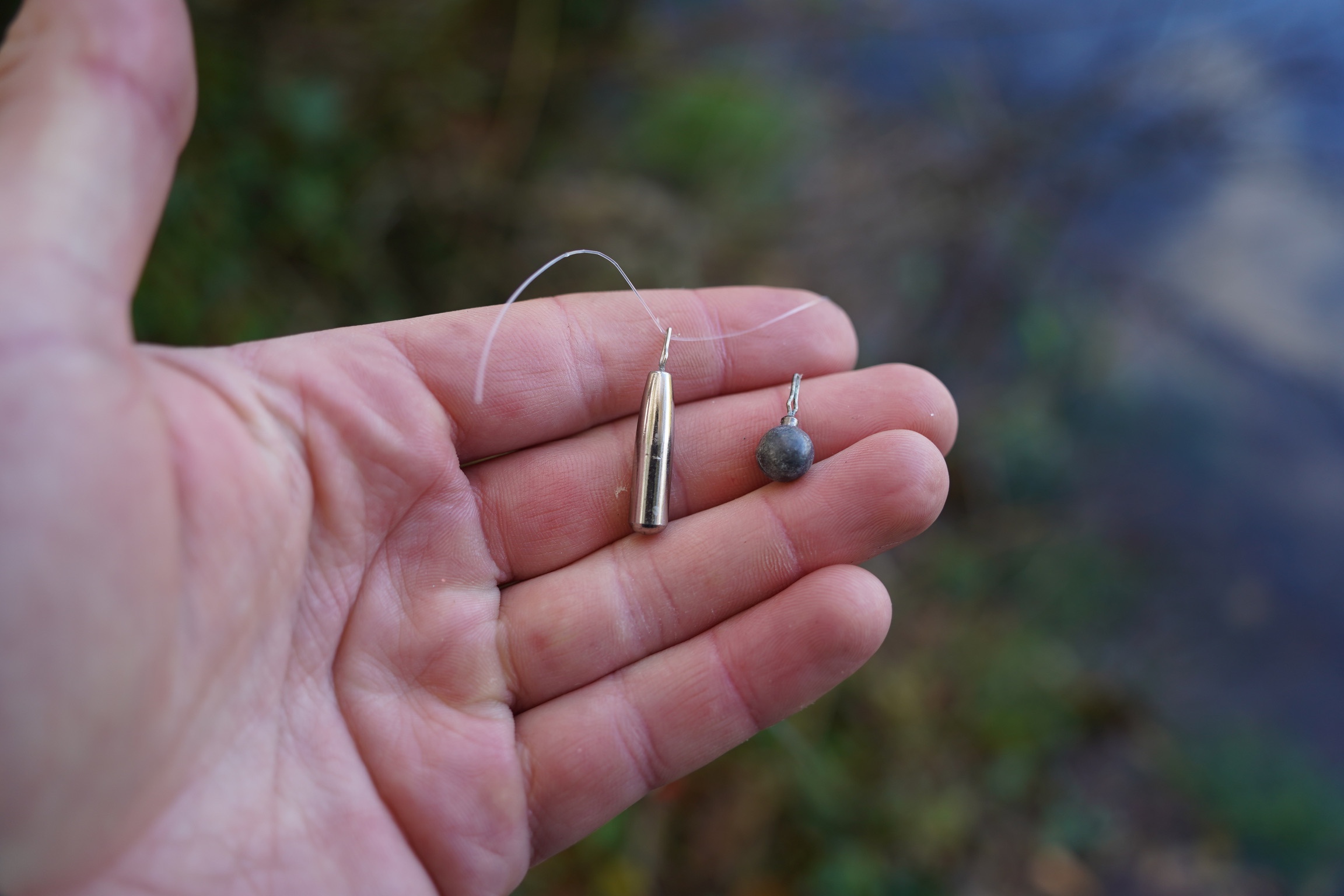
When to use the drop shot rig
The drop shot rig is useful for winter perch fishing and fishing for wrasse and pollock over rough ground when you want to retrieve very slowly on the bottom but keep your soft plastic off the seabed itself. It’s also useful for covering more ground than you can with a jig head, because they cast better.
When I say slowly, I mean seriously slowly. Some people will turn the handle a couple of times then leave the lure for a 10-30 seconds then repeat all the way back in. It takes patience, but in the winter months when fish are lethargic with their metabolisms slowed, this can be deadly.
What are the advantages of the drop shot rig?
One major advantage of this rig is that you can fish with very small lures while still having excellent casting distance and contact with your lure. This is because the lead can be whatever size is best for your rod and the hook size can be whatever size you want for the fish. For perch fishing a 7g dropshot is great, when shorefishing in the sea a 20-50g is more typical. You wouldn’t be able to put a 30g cone weight on a 2” soft lure without interfering with its presentation on a jig head or texas rig for example. All of this means the dropshot rig allows you to search large areas of water with small lures.
Finally, the hook is usually attached directly to your leader rather than on the end of a snood. This means you feel bites immediately.
Jika rig
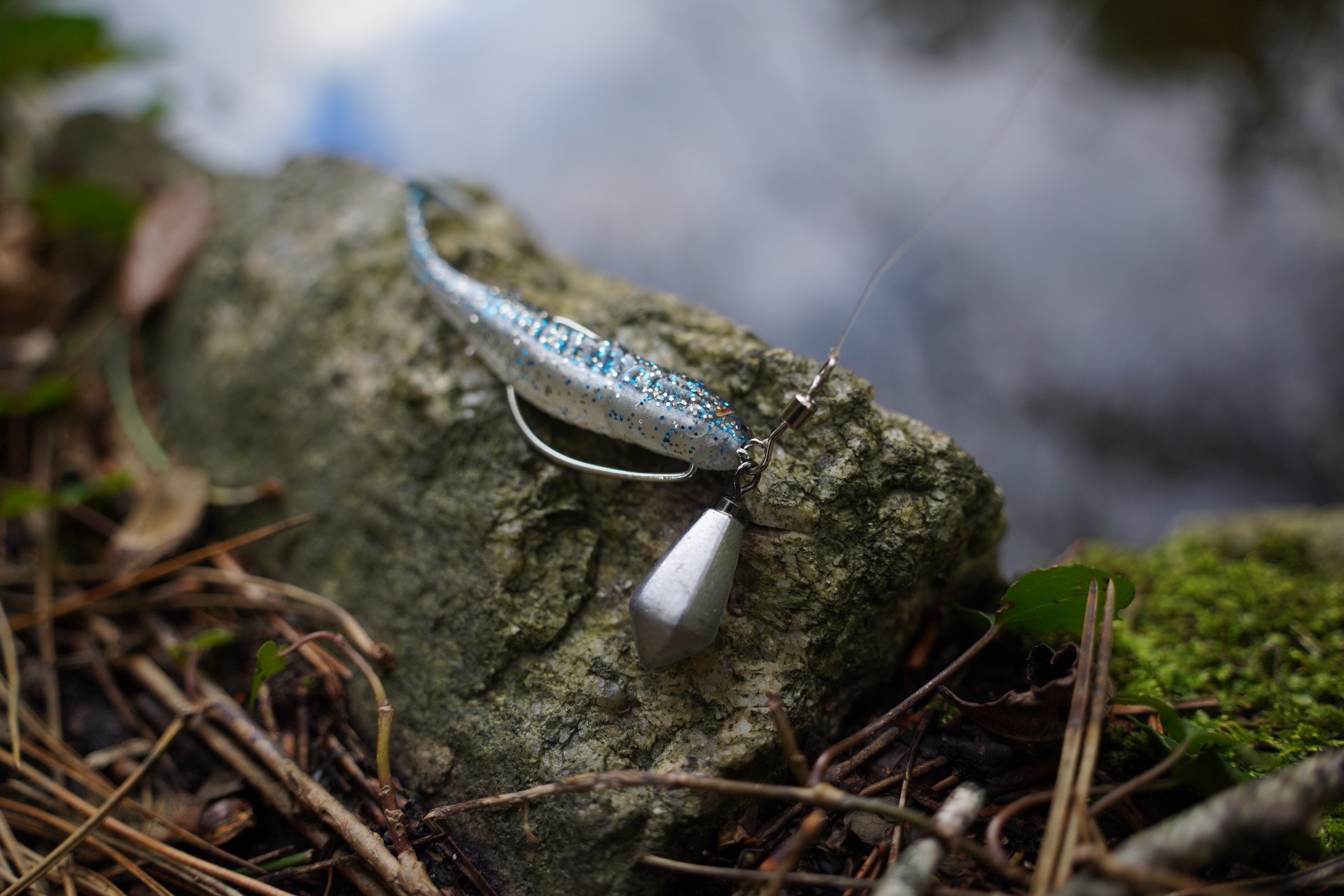
The Jika rig is similar to the cheb rig in that it is based around a simple split ring. Attached to the split ring is a weedless hook and a drop shot weight. This split ring allows you to change the weight you’re fishing with while still keeping your weight and hook connected so they stay together.
Where the Jika rig differs from most rigs is that the weight is a drop shot weight. This is a long thin cylinder.
Unlike with a regular jig head, it’s possible to fish with larger weights with smaller hooks, to increase your casting distance. Unlike with a texas rig, the weight is not free moving on the line, so bites are more easily detected. This allows you to quickly retrieve fish away from snags. The lure is also more free to move because the hook and weight are not directly connected. This improves the lure’s action.
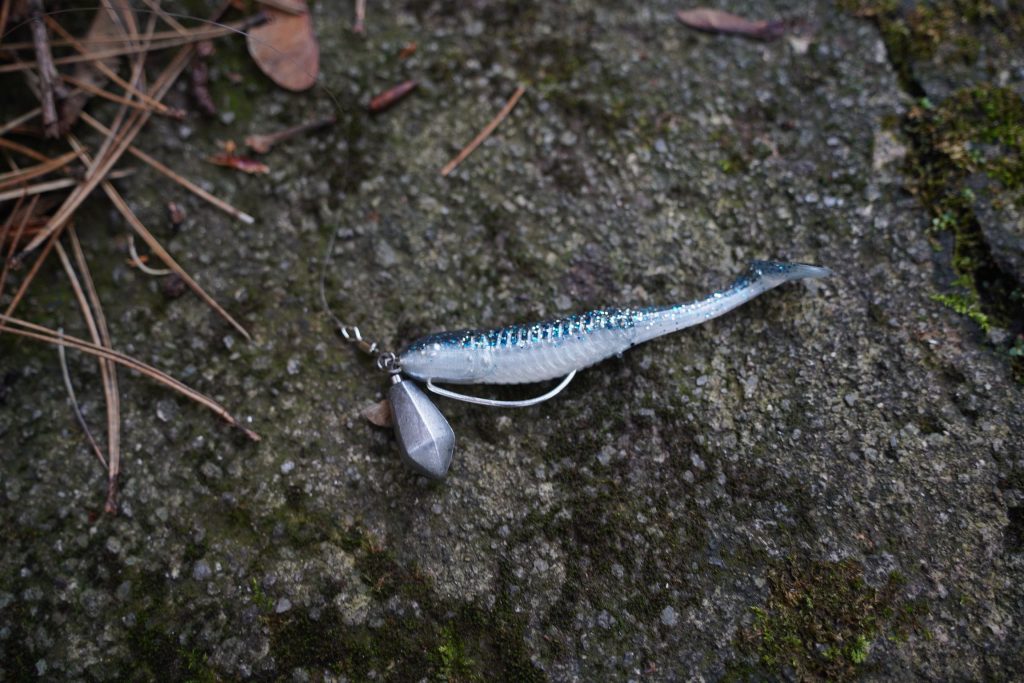
When to use the Jika rig
When you’re fishing vertically in rough ground or directly on the bottom and you don’t want your weight to be free to move up your line. Or, when you want extreme connectivity to the bottom that a cone weight does not achieve.
The unique advantage of the Jika rig is the incredible sensitivity it provides to the bottom. Something about dropshot weights having a small surface area on the bottom seems to mean you feel much more of the ground you’re fishing. On a modern lure rod you can even work out exactly what the ground you’re fishing is covered with. Round weights on a regular jig head don’t send this feedback to the same degree.
Reach for the Jika rig when you want to fish vertically in a tight spot, such as between a gap in lilly pads or down a narrow rocky gulley. Lures will fall vertically and can be jigged up and down with a great presentation. Also reach for a Jika rig for winter finesse fishing on the bottom in the UK.
The ‘Spin Rig’ (or Spinning Rig)
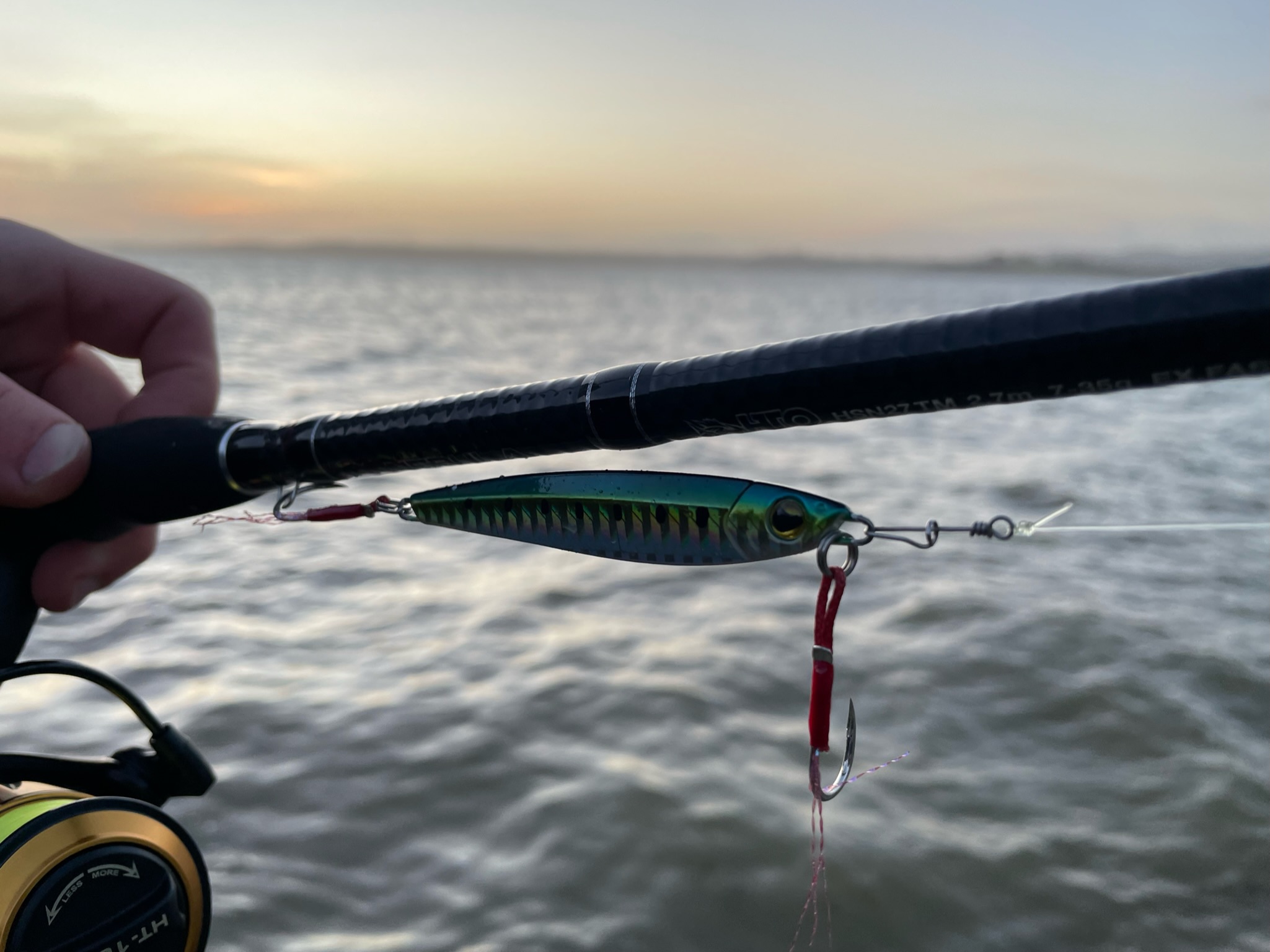
A spin rig is more of an American term for just using spinners. It’s simply a spinner attached directly to your leader or mainline. A spinner is just a shiny piece of metal with a hook attached that wiggles and shines in the water like a baitfish.
The only thing beginners need to know is that it’s always best for your spinner to not require any additional weight in order to be cast. If your lure is an appropriate weight for your rod and if your rod is appropriate for the ground you’re fishing, you don’t need a lead weight.
When to use a spin rig
This is the most popular rig in the UK. Use the spin rig when you want to cast a long way and fish the whole water column quickly for pelagic species. It’s one of the best lures for mackerel for this reason. Don’t call it the spin rig in the UK though unless you actually are one of our chubby American bros. (God bless America)
Jig heads
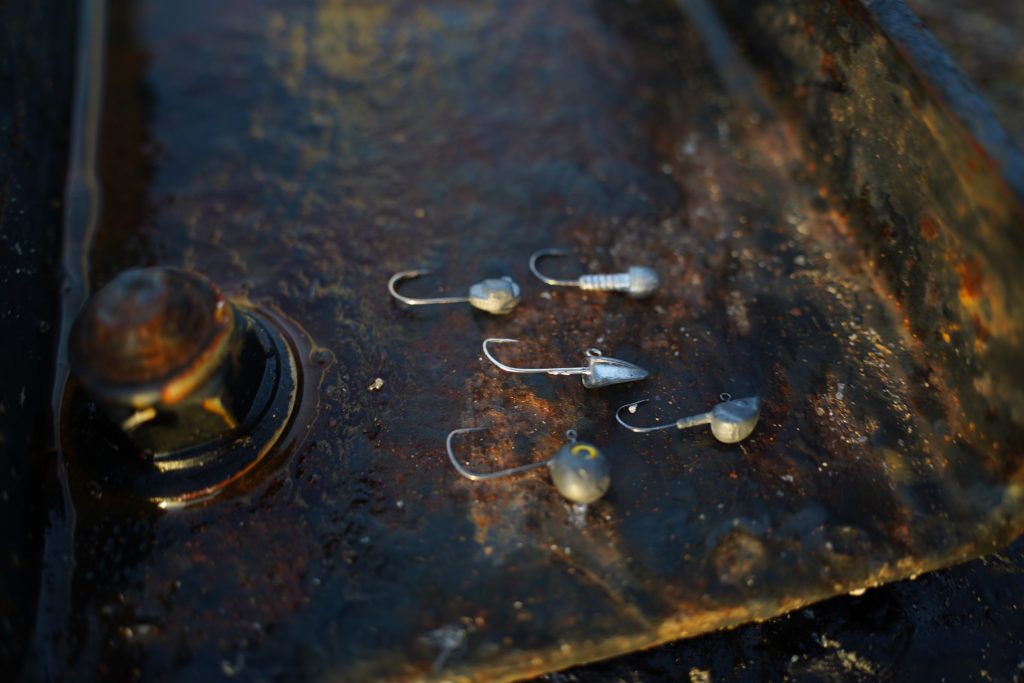
Jig heads are weighted hooks that you thread a soft plastic lure onto. They make it possible to change your lure very quickly without retying your rig. There are several types of jig head with different uses, and we will go through each type below. The most common and cheapest jig heads have ‘ball heads’…
Ball head jig heads
Ball head jig heads are well suited for bumping along the bottom as they tend to lean forwards allowing the soft lure to sit ‘ass up’. This means your lure is more visible to fish when on the bottom. A simple ball head jig head is the best choice when you want a cheap general purpose jig head.
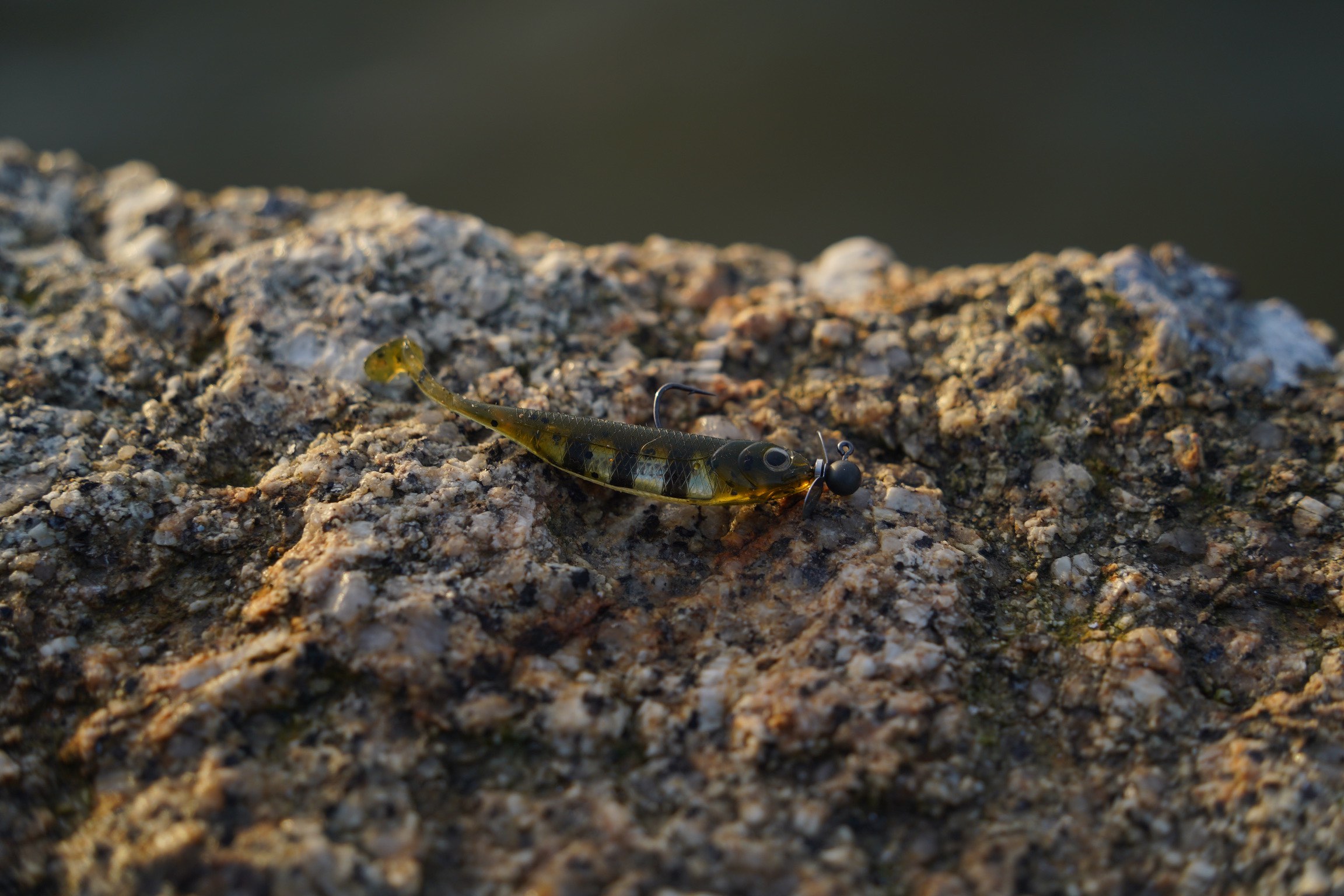
Finesse jig heads
Then you have dart jig heads and finesse jig heads, which are both designed to move side to side when twitched to imitate an injured fish. These work well with straight tail lures that have limited actions without a dart jig head. These are used by those practicing LRF fishing or targeting trout or perch on ultra light rods casting under 10g.
Finesse jig heads are useful when you’re fishing ultra light with straight tailed lures and you’re targeting fish that respond well to erratic movements like smelt, herring or summer perch.
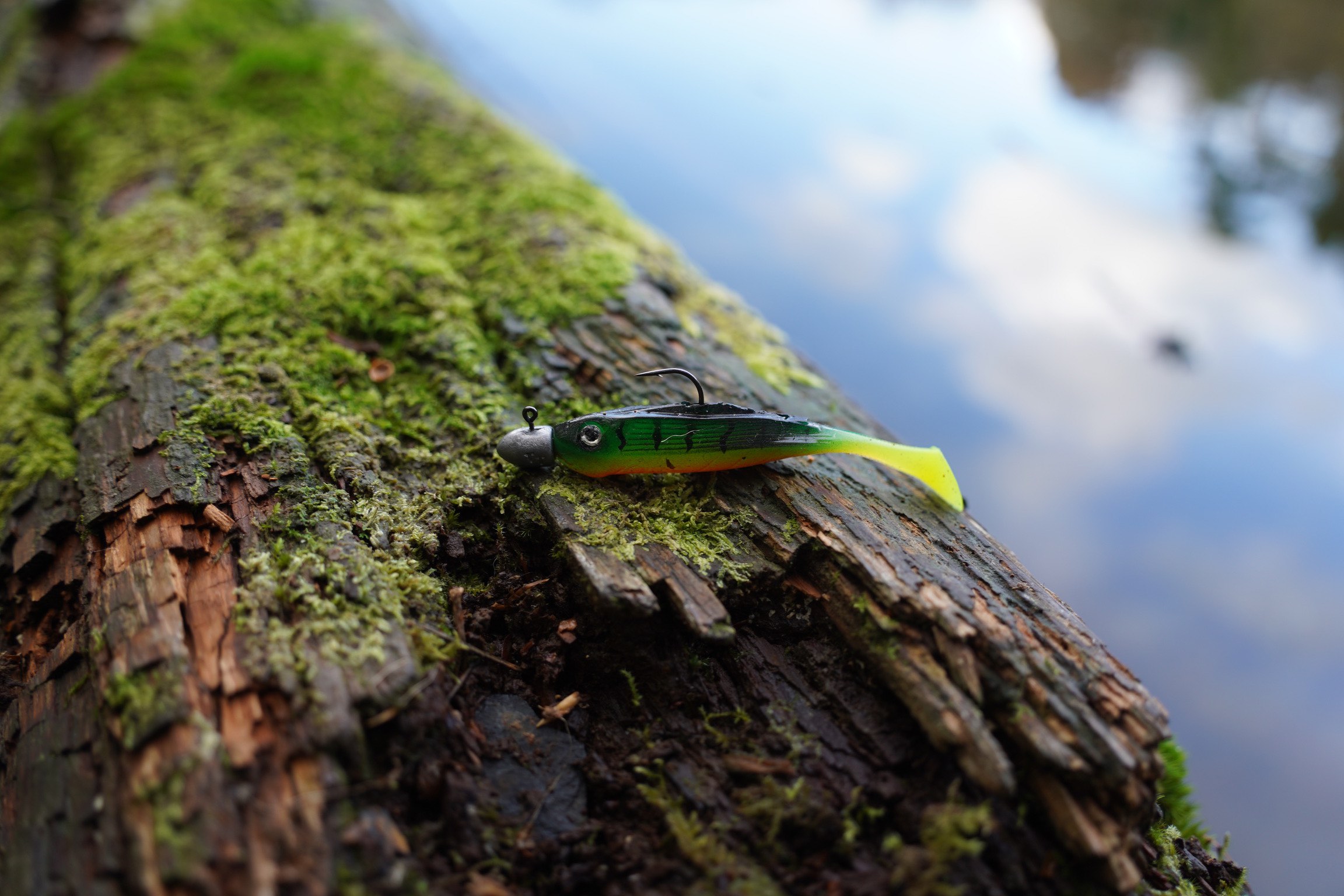
Level swim head jig heads
There are also level swim heads, which are designed to fall parallel to the surface of the water (rather than nose dive like most jig heads). These often have a cylinder, or bullet shape, similar to the weight on a drop shot rig.
When you’re simply casting and retrieving a lure through the midwater or near the surface and you want the most natural presentation possible. This is because some level swim heads have fish-designed heads that blend into your lures body more naturally than a standard ball weight.
Often if a paddle tail has a head of its own, I will bite that off to replace it with the lead head on the jighead.
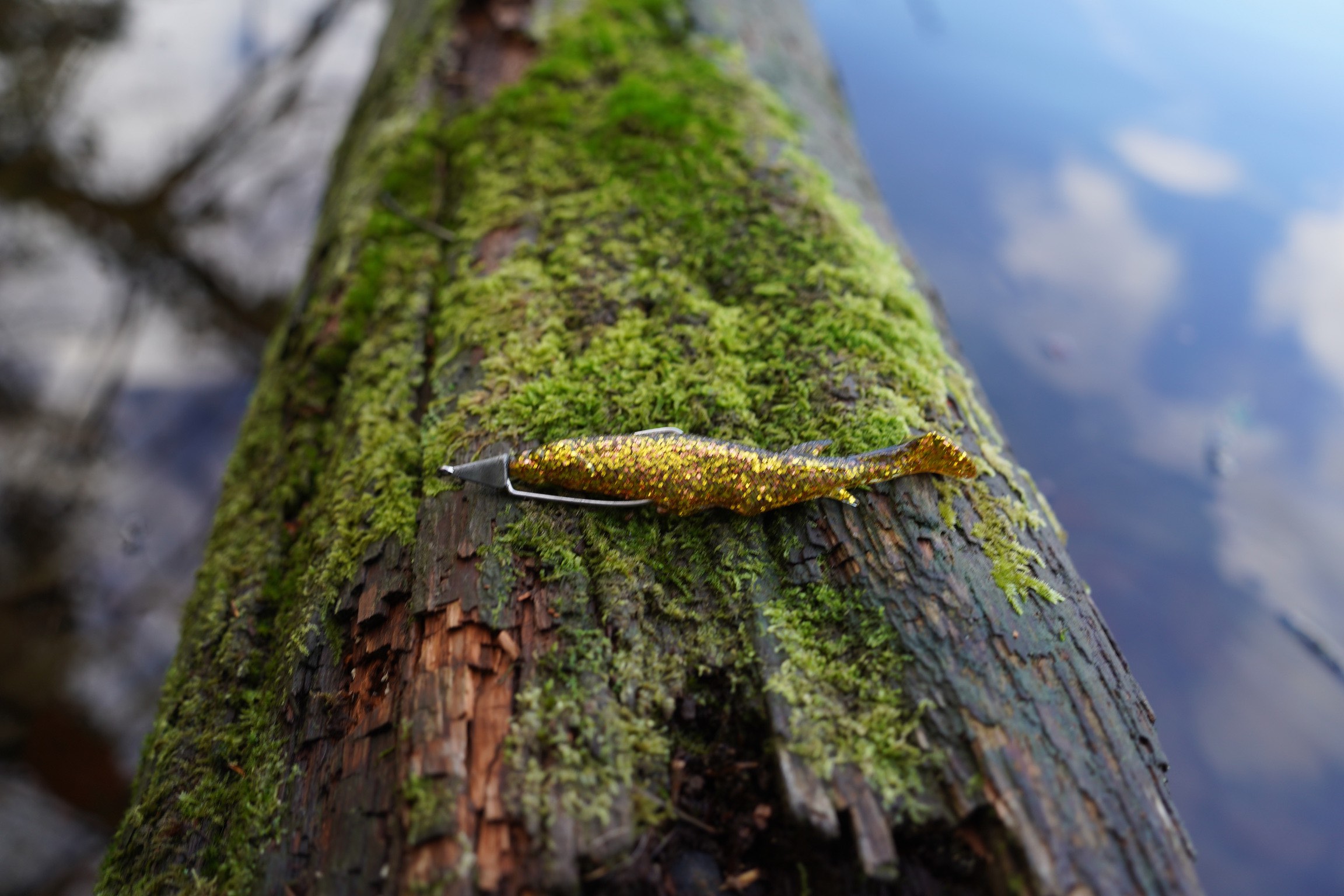
Weedless jig heads
There are weedless jig heads, which have weedless hooks to avoid snagging. These are useful for perch fishing anywhere with lots of snags, be they lily pads, reeds or submerged shopping trolleys.
Use weedless jig heads when you’re fishing over snaggy ground near the bottom and don’t want to lose all your tackle. Weedless jig heads are also useful when you want direct contact with your lure and weight at the same time.
Neutral buoyancy jig heads
Neutral buoyancy jig heads are not made from lead but from resin. They cast well but unlike lead sink very slowly. These are useful for suspending lures in the very top section of the water.
Useful for shallow water perch marks where you want to cast far yet fish slow and shallow.
Hidden weight jig heads have the weight on the shank of the hook. This means when you rig a soft plastic little or none of the weight is visible.
These are useful for extremely cautious fish in pressured waters when you want a hyper-realistic presentation with no weight visible.
Ned rig
The Ned jig heads have become much more popular in recent years.
Ned rig jig heads have a short cylinder shape which is designed to make the lure sit ass up on the bottom. This makes your soft plastic look like a fish feeding on the bottom – a very natural presentation. People use these with straight-tail lures like sluggos or senkos. These jig heads also provide superior sensitivity to the bottom than other designs, probably because of the flat face. They have taken the US bass fishing world by storm and are also effective for UK lure fishing.
When to use the ned rig:
When you’re dead sticking with a senko and you want your lure to sit proud off the bottom to make it more visible and not just lie flat. Useful in the dead of winter for tough bass fishing days. It would work for wrasse but this level of finesse is never required for them. Useful for winter perch with creature baits.
The Cheb Rig
The Cheb Rig is gaining popularity in the UK as a superior form of weedless jig head. It allows you to change your hook and weight size easily while fishing. This means you can simply carry a few different sized weights and hooks and modify your approach without retying or recliping a whole new rig.
A normal weedless jig head comes with a lead weight welded to the hook. On the Cheb Rig, the weight and hook attach separately. This is useful for advanced lure anglers that wish to fish with larger hooks with tiny weights, or small hooks with heavier weights. It’s pretty hard to find size 2/0 hooks with a 1-2g weight. Or a size 10 hook with a 10g head.
When to use the cheb rig
The cheb rig is useful for fishing rough snaggy ground, or when you want to be able to change your hook or weight size quickly when covering different types of ground quickly. It’s a rig for pretty serious anglers, most people are better off with regular weedless jig heads.
The cheb rig has many applications in UK fishing both in saltwater and freshwater. When perch fishing for example in a snaggy canal with ultra light rods and reels, you could use a cheb rig to get a direct contact with your lure that you wouldn’t get with the Texas Rig. The free-running weight on the texas rig can make subtle bites harder to detect.
The extra movement between the weight and the hook also means soft lures can move more freely, improving your lures action.
Weedless Weightless Rig
Weedless weightless soft plastics aren’t actually weightless. The soft plastic body of the lure provides enough weight that with a modern bass rod that casts under 28g as a maximum, you can cast them effectively. You can also use weighted weedless hooks to add additional weight, like the ones that come with this kit.
When bass are following plugs but not taking, weedless weightless lures save us from blanking. Often this is when water clarity is excellent and the fish have a longer time to suss out that your treble-covered hard lure isn’t what it claims to be! Conversely, in rougher seas and on windier days it’s often impractical to fish weedless and weightless.
Weedless weightless lures also allow you to fish over the roughest, shallowest ground, without your lure immediately sinking to the bottom. There is a type of weed that bass love to lurk in called devils hair or sea spaghetti – it’s that one with the long thin fronds that float up in the water towards the surface. You can’t pull a plug through that…
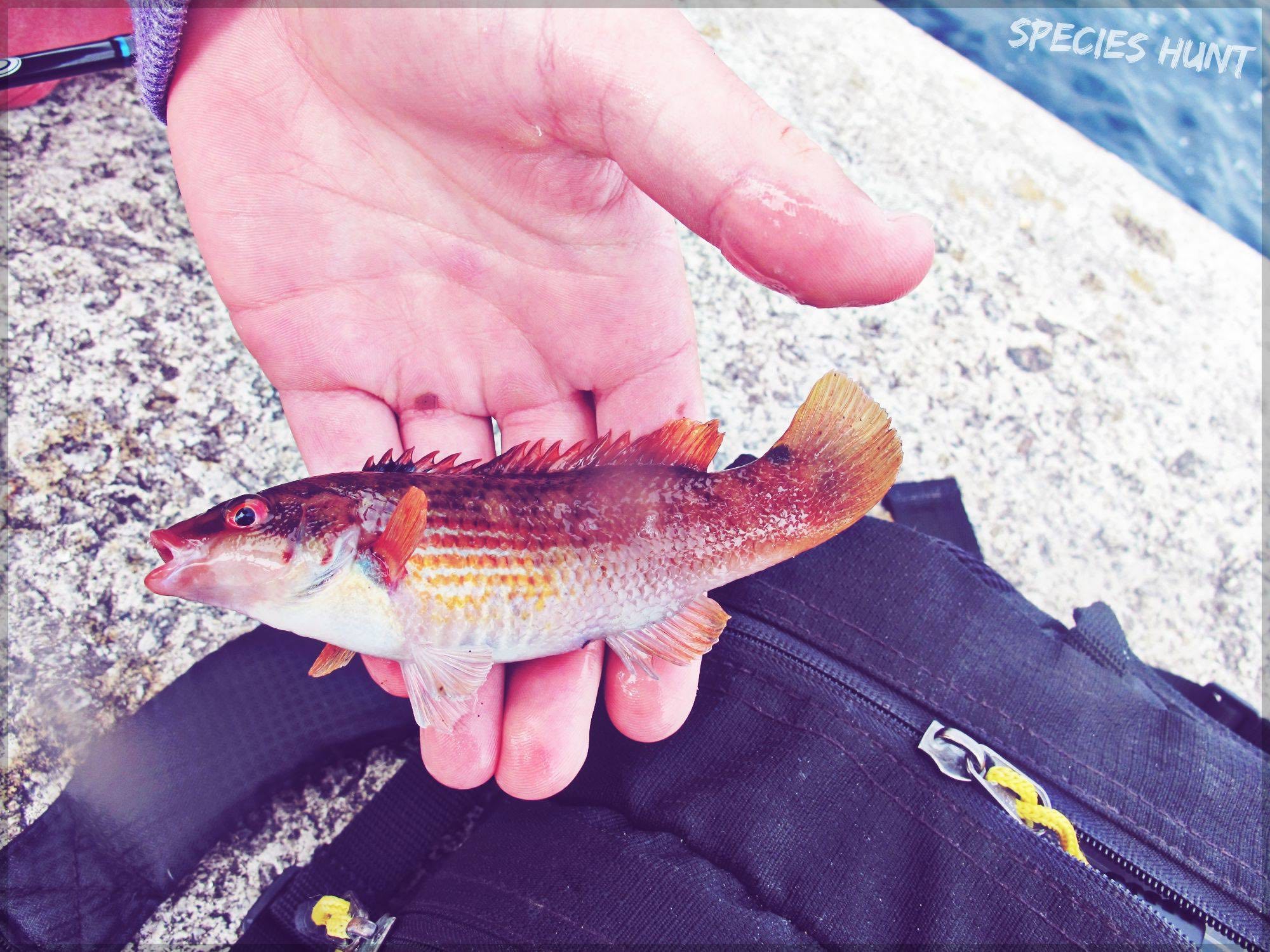
Split Shot Rig
The split shot rig was originally used for freshwater bait fishing. LRF anglers use it for mini species like scorpion fish and gobies. In fresh water, split shot are used beneath small floats and serve the purpose of keeping the float upright and allowing the baited hook to sink. When the saltwater guys use them for targeting very small fish, they use worm imitations as bait, with just a few split shot to make the lure sink. Sometimes this rig is used to target mullet, because the tiny split shot allow for a very subtle presentation, but its usage is pretty niche.
It’s also possible to use split shot to add a little extra weight to a weedless weightless rig. That’s a rig that has no weight at all – just a soft plastic on a hook. It’s used when you want a lure to sink very, very slowly. That can be useful over extremely shallow ground, or when you just want to achieve a hyper-realistic presentation for spooky fish.
Split shots do cause some line damage, since they grip the line by pinching it. Unless you are an LRF angler, their only use for you in the UK will be adding a little extra weight to an unweighted soft plastic.
When to use a split shot rig when sea fishing
When you want to catch mini species like scorpion fish, either because there aren’t any mainstream sport fish around.
